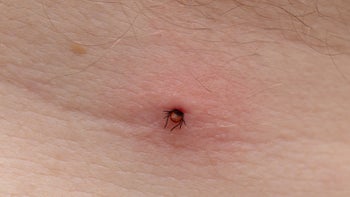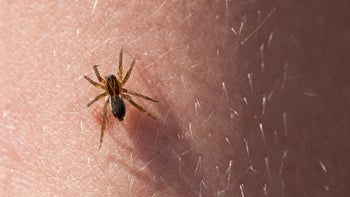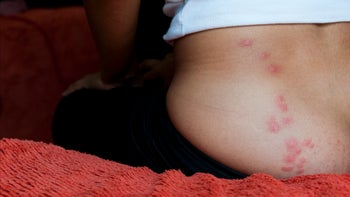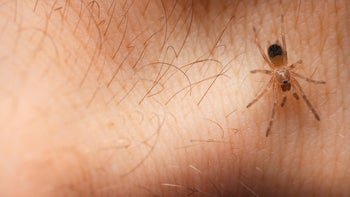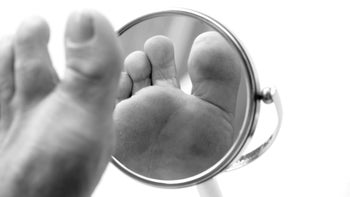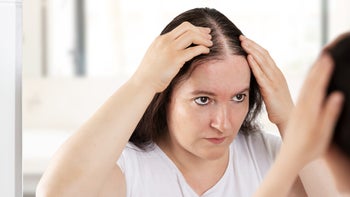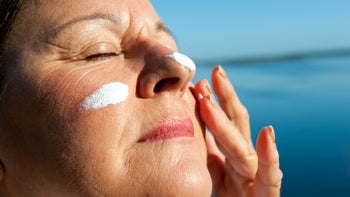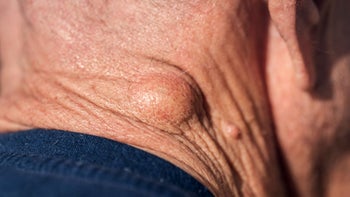
Bothered by Sagging Jowls? Here Are 5 Easy At-Home Treatments
Key takeaways:
Sagging jowls happen when the skin around your jawline becomes loose. It happens as you get older because the skin loses elasticity and volume.
The best ways to prevent sagging jowls are to avoid smoking and use sunscreen regularly.
At-home treatments for sagging jowls may help reduce their appearance. These include massage, facial exercises, retinoid cream, and collagen supplements.

If you’re feeling frustrated by loose, drooping skin around your jawline, you’re not alone. People often refer to this as sagging jowls, which can happen as you age. If you’re looking for tips on how to reduce sagging jowls naturally, you’re in luck. Home treatments are a lot easier to do — and less expensive — than a facelift or injectable fillers. And some of these treatments can make a noticeable difference. Here, we’ll review what the science says about the best treatments you can do at home.
What causes jowls?
Jowls occur due to aging, said Dr. Megan Casady Flahive, a board-certified dermatologist in Maryland. She explained that there are two factors:
Volume loss in the face: This means there will be “less support for the skin to hold onto,” she explained.
The breakdown of collagen and elastin: These are proteins in your skin that “keep it tight and supple,” she said.
Search and compare options
And all of this happens earlier than you might think. “We start to lose collagen in our skin at around the age of 18. And by our 30s, we’re losing it at a more rapid rate,” said Dr. Flahive.
Factors that can make sagging jowls worse include:
Smoking: Nicotine breaks down collagen and elastin in the skin. It also makes it hard for new collagen to form, so skin becomes looser.
Sun damage: This is one of the biggest risk factors for sagging jowls, according to Dr. Flahive. Ultraviolet (UV) radiation can cause skin damage. It weakens collagen fibers and breaks down connective tissue. This is just one more reason not to skip sunscreen.
Certain facial expressions: If you spend a lot of time stretching your skin in certain positions — like yawning or puckering lips — it can lead to drooping skin over time. This is more likely to be a problem if you’ve already lost elasticity in your skin, since your skin doesn’t bounce back as easily.
Dramatic weight loss: When you lose fat in your face, the skin around your jawline can appear droopier. This happens because there’s less volume underneath the surface of the upper cheeks to fill it out. The loose skin then collects into the jowl area.
Weight gain: In other cases, gaining weight can worsen jowls, depending on where your body tends to store fat. Jowls contain body fat, so it makes sense that gaining weight can increase their size.
Genes: Some people are more likely to have sagging jowls because it runs in their families.
A balanced diet can keep your skin glowing and healthy. Find out what foods and beverages can help keep your skin looking its best.
Sunscreen can protect against premature skin aging. But that’s not all. Learn about the benefits of daily sunscreen.
Interested in giving face yoga a try? Here are five facial exercises you can try.
How can you treat jowls at home?
If you want to reduce the appearance of sagging jowls without procedures or office-based treatments, you can try one or more of the following options.
Facial exercises and ‘face yoga’
Some people claim that facial exercises for jowls can help. Facial exercises — like any type of exercise — strengthen muscles. The idea is that repeatedly using certain facial muscles makes them grow larger. This could restore volume in the face and improve the appearance of sagging jowls.
"Facial yoga” and exercises to improve drooping skin are all over the internet. But research is limited. One small scientific study found that women who did regular facial exercises for 20 weeks had increased fullness in the face. And they were happy with the results. But there were some limitations of this study:
One of the coauthors of the study developed the facial exercise program that the study participants used. This means there’s a risk of bias in the study results.
It was a small study of 27 women, and 11 of them dropped out before completing the study.
The facial exercises lasted 30 minutes, which might be too long for some people.
Another review analyzed results of four different studies looking at the effect of facial exercises. They found that facial exercises led to more facial fullness and elasticity of the skin.
More research is needed to know what kind of exercise frequency is needed to see results. But if you’re interested, you can start doing face yoga exercises and see if it makes a difference over time.
Collagen supplements
Oral collagen has been shown to improve your skin’s firmness and hydration. A large meta-analysis found that oral collagen can improve elasticity and lessen the appearance of wrinkles. It may also soften the appearance of sagging jowls. Eating more foods rich in collagen might be helpful as well.
Read more like this
Explore these related articles, suggested for readers like you.
If you take collagen for a few months and don’t notice a difference, it’s possible you may be low in silica. Silica is a mineral that your body needs to make collagen. Some people take silica in supplement form for its possible benefit to their skin. But more research is needed to know how much silica is safe or recommended.
Keep in mind that having enough vitamin C is also needed to produce collagen.
Topical creams
Many topical creams won’t help sagging jowls. While some ingredients — like caffeine, green tea, peptides, seaweed, and vitamins — can temporarily tighten skin, they won’t be enough to lift sagging jowls. And the results you do get aren’t permanent.
The best cream for sagging jowls are retinol-based creams. When you use these creams regularly, they can increase collagen production in the skin. Dr. Flahive reminds her patients that retinoid creams take months to years to make a small difference in the appearance of their jowls. Even with regular retinoid use, sagging jowls won’t fully disappear.
We also want to add a special note on vitamin C serums and creams. Topical vitamin C won’t directly reduce jowls. But it’s an antioxidant, so it can help protect against skin damage from the sun and pollution. Using vitamin C may still be helpful to prevent sagging jowls. Just make sure to apply plenty of sunscreen, since vitamin C makes your skin more sensitive to the sun.
Massage
Gentle massage of the skin can improve blood flow and temporarily decrease inflammation. This can lead to a more youthful skin appearance. But it’s not clear if massage increases collagen or elastin production in facial skin. This has only been shown in models, not humans. Even so, it might be worth a try since it’s a relatively low-risk treatment. You can massage skin with clean fingers or with a massage roller.
Low-level laser therapy
Low-level laser therapy uses red light or near-infrared light to penetrate the skin. These devices are often marketed to reduce wrinkles, inflammation, and smooth out skin. They can be used at home, and are painless.
There’s some research showing that these devices can increase collagen and elastin production. But these studies were done in human cells in a laboratory, not in living humans. So, it’s not clear if low-level laser therapy could be an effective treatment for sagging jowls.
It’s also important to note that home devices are less powerful — and less regulated — than those you’ll find in a dermatology office. So it’s hard to know if a home device will truly help your skin.
Nutrition
It’s no secret that good nutrition can make a difference in your skin’s appearance. Below are some foods you could incorporate, and why:
Fruits and vegetables: These contain antioxidants that protect against inflammation and skin damage. Some of these — like vitamin C and vitamin A — are necessary for your body to make collagen.
Water: Staying hydrated helps the skin look smoother and plumper. While it won’t remove jowls, it’s a very low-cost strategy that has little downside — as long as you don’t overdo it.
Healthy fats: Omega-3 fatty acids (found in fatty fish) and some other fatty acids can improve the appearance of aging skin. Olive oil is another type of healthy fat that may play a role in keeping your skin looking more youthful. Olive oil might do this by boosting cells — known as fibroblasts — that create more elastin in the skin.
Minimally processed foods: Eating fewer refined sugars and carbs can be good for your skin. When you eat a lot of sugar, it creates harmful substances. These are called Advanced Glycation End Products, or AGEs. They can build up in the skin and make it less elastic. AGEs can also increase inflammation, which can harm the appearance of your skin.
Foods high in zinc and magnesium: These minerals are necessary for collagen formation in the skin. Many nutritious foods contain zinc and/or magnesium. For example, meat, fish, and seafood (especially oysters) are high in zinc. Good sources of magnesium include leafy green vegetables, chia seeds, and nuts. And black beans are full of both magnesium and zinc.
Treatments to skip (save your money)
When it comes to at-home remedies for sagging jowls, not all treatments live up to the hype. Here are some popular options you might want to avoid.
Home microneedling devices
Microneedling uses tiny needles inserted into the skin to cause small injuries. The tiny injuries are intentional to stimulate the body’s healing process, so your skin makes more collagen and elastin.
You can buy home devices to do microneedling on yourself. But these home devices don’t go into the skin deeply enough to help make more collagen.
Professional-grade microneedling tools go deeper into the skin and can help make collagen and elastin. But only certain healthcare professionals — like dermatologists and other licensed clinicians — can use these devices.
Microcurrent devices such as NuFACE
NuFACE and similar devices use very low-level electrical currents. They claim to give a “facelift” effect. The idea is that these electrical currents increase blood flow in the skin and make facial muscles tighter for a short while. But since these devices don’t affect collagen or elastin production, any visible results won’t last. Dr. Flahive said that these devices can be used along with other treatments. But they probably won’t make a big difference in sagging jowls when used on their own.
Will my jowls ever go away?
Without surgery or professional cosmetic procedures, it’s unlikely that your jowls will completely disappear. At-home treatments can’t make loose skin disappear. But they might make loose jowls seem smaller or less noticeable.
If you’re looking for ways to soften the appearance of jowls or make your face look fuller, at-home treatments might be right for you. If you want a more permanent solution, you should reach out to a medical professional to discuss your options.
The bottom line
Sagging jowls are caused by loose skin around the jawline. This is a natural result of aging. But that doesn’t mean there’s nothing you can do about it. Some treatments — like facial exercises, collagen supplements, and retinoid creams — can improve blood flow and elasticity in the skin. You can also keep your skin healthy by wearing sunscreen and staying hydrated. While none of these at-home treatments will completely get rid of sagging jowls, they may provide some benefits without breaking the bank.
Why trust our experts?



References
Alam, M., et al. (2018). Association of facial exercise with the appearance of aging. JAMA Dermatology.
American Academy of Dermatology Association. (n.d.). Many ways to firm sagging skin.
Avci, P., et al. (2013). Low-level laser (light) therapy (LLLT) in skin: Stimulating, healing, restoring. Seminars in Cutaneous Medicine and Surgery.
Boyera, N., et al. (1998). Effect of vitamin C and its derivatives on collagen synthesis and cross-linking by normal human fibroblasts. International Journal of Cosmetic Science.
Caberlotto, E., et al. (2017). Effects of a skin-massaging device on the ex-vivo expression of human dermis proteins and in-vivo facial wrinkles. PLOS One.
Choi, F. D., et al. (2019). Oral collagen supplementation: A systematic review of dermatological applications. Journal of Drugs in Dermatology.
de Araújo, L. A., et al. (2016). Use of silicon for skin and hair care: An approach of chemical forms available and efficacy. Anais Brasileiros de Dermatologia.
de Miranda, R. B., et al. (2021). Effects of hydrolyzed collagen supplementation on skin aging: A systematic review and meta-analysis. International Journal of Dermatology.
Dhital, B., et al. (2017). Ultraviolet radiation reduces desmosine cross-links in elastin. Biochemistry and Biophysics Reports.
González-Acedo, A., et al. (2023). The benefits of olive oil for skin health: Study on the effect of hydroxytyrosol, tyrosol, and oleocanthal on human fibroblasts. Nutrients.
Journal of the American Academy of Dermatology. (2019). Low-level red and infrared light increases expression of collagen, elastin, and hyaluronic acid in skin.
Just, M., et al. (2007). Effect of smoking on skin elastic fibres: Morphometric and immunohistochemical analysis. British Journal of Dermatology.
Knuutinen, A., et al. (2002). Smoking affects collagen synthesis and extracellular matrix turnover in human skin. British Journal of Dermatology.
Latreille, J., et al. (2012). Dietary monounsaturated fatty acids intake and risk of skin photoaging. PLOS One.
Lim, H. W., et al. (2021). Effects of facial exercise for facial muscle strengthening and rejuvenation: Systematic review. Journal of Korean Physical Therapy.
Moeller, M. (2021). How microneedling is regulated. American Med Spa Association.
Office of Dietary Supplements. (2022). Magnesium: Fact sheet for health professionals. National Institutes of Health.
Reece, E. M., et al. (2008). The mandibular septum: Anatomical observations of the jowls in aging-implications for facial rejuvenation. Plastic and Reconstructive Surgery.
Seaborn, C. D., et al. (2002). Silicon deprivation decreases collagen formation in wounds and bone, and ornithine transaminase enzyme activity in liver. Biological Trace Element Research.
Tokyo Institute of Technology. (2018). Ready for a close-up: The science behind face massage rollers. Science News.
Wang, L., et al. (2024). The effects of advanced glycation end-products on skin and potential anti-glycation strategies. Experimental Dermatology.
Wang, X., et al. (2019). Modulating effect of fatty acids and sterols on skin aging. Journal of Functional Foods.
Xu, X., et al. (2021). Effects of electrical stimulation on skin surface. Acta Mechanica Sinica.
Zheng, W., et al. (2022). Research advances on the damage mechanism of skin glycation and related inhibitors. Nutrients.







